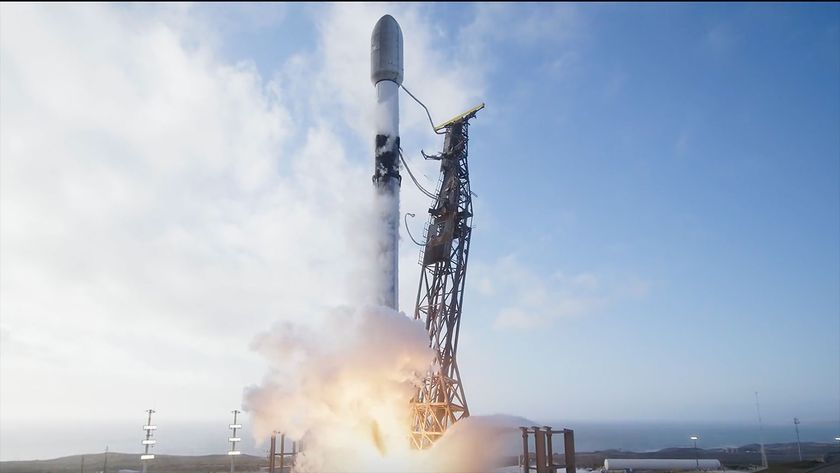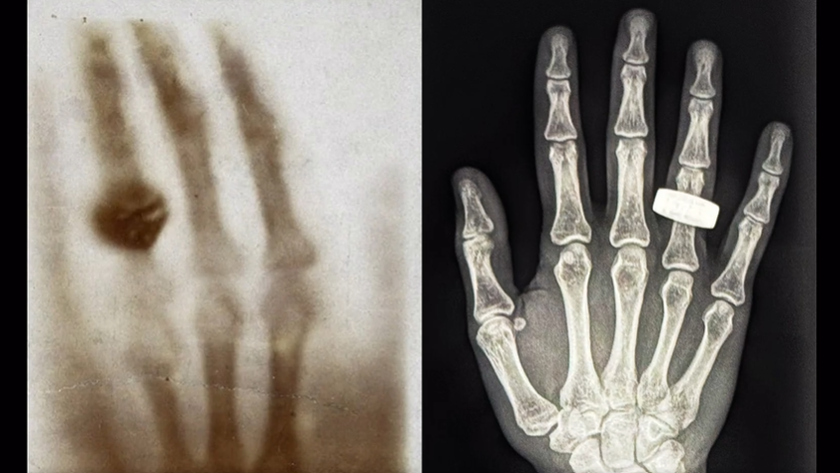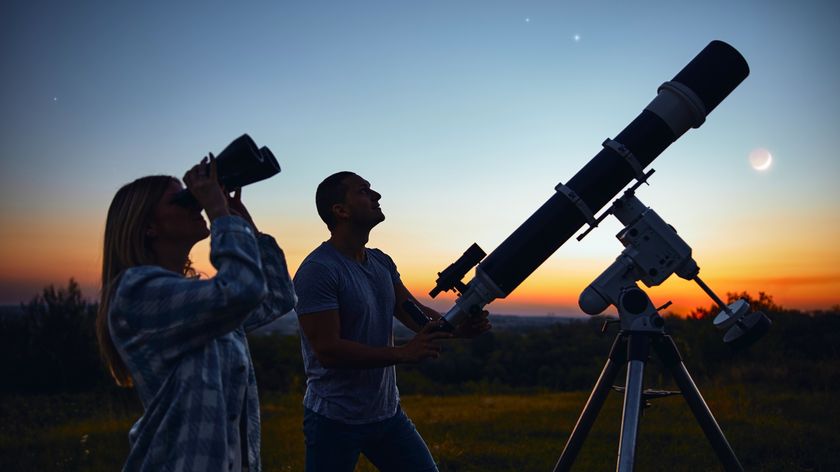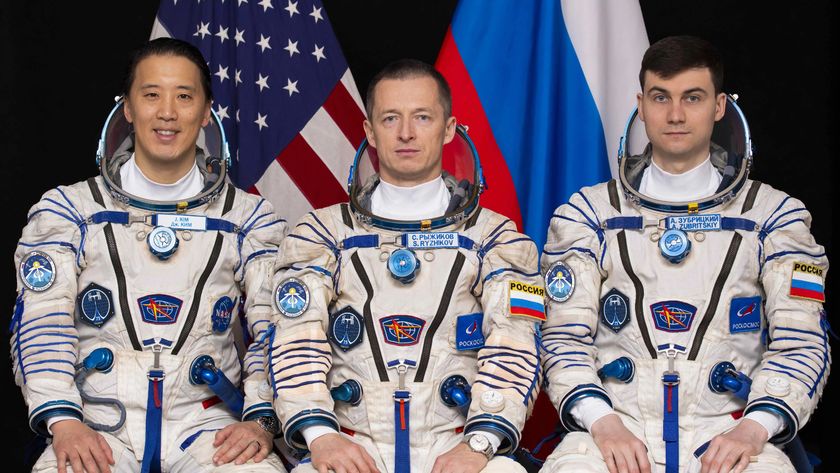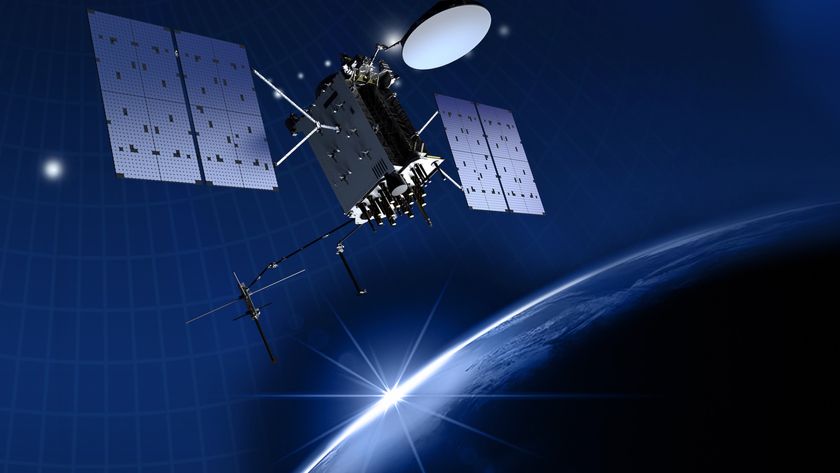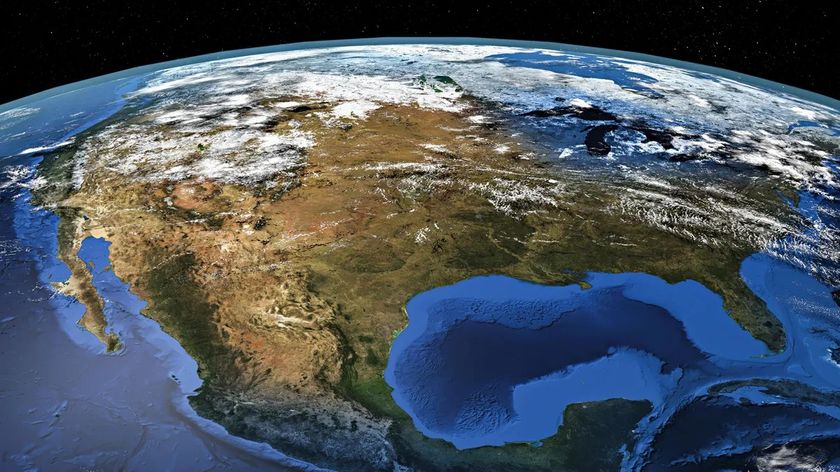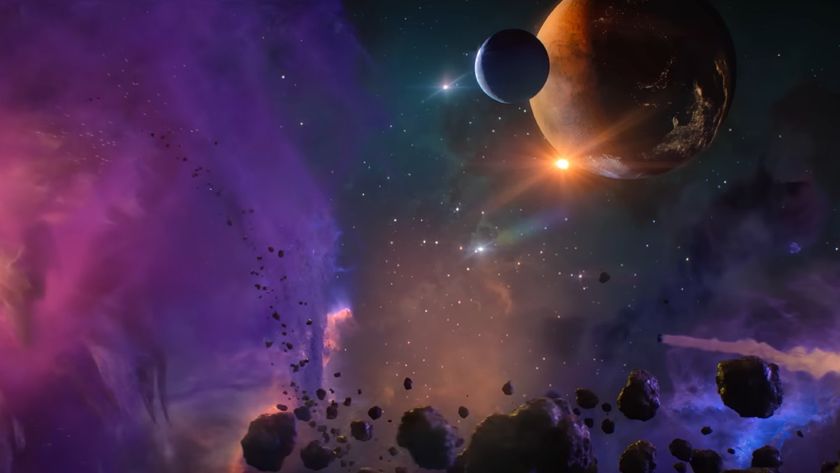Astronaut Alan Bean, Apollo Moonwalker-Turned-Artist, Dies at 86
HOUSTON — Apollo astronaut Alan Bean, who shared his experiences as the fourth human to walk on the moon through paintings sprinkled with lunar dust, has died at the age of 86.
Bean died on Saturday (May 26) at Houston Methodist Hospital in Houston, Texas, as confirmed by his wife, Leslie. His death followed his suddenly falling ill while on travel in Fort Wayne, Indiana two weeks ago.
"Alan was the strongest and kindest man I ever knew. He was the love of my life," said Leslie Bean in a statement released by the Astronaut Scholarship Foundation on Saturday. "A native Texan, Alan died peacefully in Houston, surrounded by those who loved him." [Remembering Alan Bean: A Moonwalking Astronaut-Artist in Pictures]
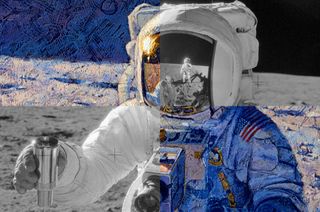
A member of NASA's third group of astronauts selected in 1963, Bean flew twice into space, first as the lunar module pilot on the Apollo 12 moon landing mission in November 1969, and then as the commander of the second crewed expedition to the United States' first space station, Skylab, in July 1973.
In total, he logged 69 days, 15 hours and 45 minutes in space, including 31 hours and 31 minutes on the lunar surface. He then spent four decades interpreting what he saw as a professional artist.
An astronaut's journey
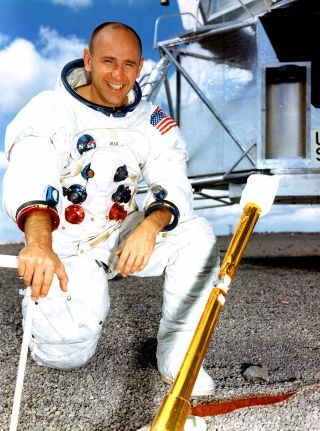
Bean's journey to the moon almost ended in a flash. Or rather two flashes, had it not been for his memory of an obscure switch in his spacecraft.
Launched on top of a Saturn V rocket on Nov. 14, 1969, Bean and his two Apollo 12 crewmates, Charles "Pete" Conrad and Richard "Dick" Gordon, were less than a minute into flight when their booster was struck by lightning, twice. The electrical discharge knocked out their power and garbled the telemetry streaming to Mission Control.
Get the Space.com Newsletter
Breaking space news, the latest updates on rocket launches, skywatching events and more!
A quick-thinking flight controller, John Aaron, recalled a test from a year earlier that produced a similar data pattern and suggested the crew take "SCE to AUX," which would switch the spacecraft's signal conditioning equipment (SCE) to its backup.
"What the hell is that?" replied Conrad, saying out loud what Gordon and many of those in Mission Control were also thinking.
Fortunately, Bean remembered the switch — which was located over his shoulder — from an earlier training simulation.
"They call[ed] to get me to throw a switch, which I did," Bean recounted in a 1998 NASA oral history. "I didn't remember what the switch was for, either ... but it was giving them telemetry data."
With data again flowing, and with more switch throws by Bean and his crewmates during the remainder of the ascent into Earth orbit, the spacecraft recovered and was able to continue on its planned path to the moon.
Surveyor III, I presume
Five days after their launch, Bean and Conrad left Gordon in orbit about the moon on the command module "Yankee Clipper" and landed the lunar module "Intrepid" in the Ocean of Storms on the moon.
"My, that Sun is bright," remarked Bean as he took his first steps onto the surface.
Unlike Neil Armstrong and Buzz Aldrin who preceded them to the moon on Apollo 11 four months earlier, Conrad and Bean had made a precision landing, touching down within walking distance of a target.
"There that thing is! Look at that!" exclaimed Bean, spotting the Surveyor 3 robotic lander, which NASA had sent to the moon in 1967.
During the second of two moonwalks together, Bean and Conrad retrieved several pieces of the Surveyor, which they returned to Earth for study, along with some 75 pounds (35 kilograms) of moon rock that they collected along the way. [Apollo 12: NASA's Pinpoint Moon Landing in Photos]
Bean also left something of his behind. Stepping away from Intrepid to the lip of a large crater, Bean tossed his silver astronaut pin, a symbol worn by those who had yet to fly in space. (He would replace it with a gold pin after returning to Earth.)
"It'll be there for millions and millions of years," wrote Bean in 2000, "or until some tourist finds it and brings it back to Earth."
Bean, Conrad and Gordon splashed down in the Pacific Ocean on Nov. 24, 1969. Like the Apollo 11 crew before them, the three were recovered by the USS Hornet aircraft carrier and quarantined for 21 days as a precaution against any possibility of "moon germs."
A new frontier
Bean's second space mission was six times as long as Apollo 12 had been and it covered a distance 100 times that of the Earth to the moon.
Beginning with a launch on a Saturn IB rocket on July 28, 1973, Bean led the crew of Skylab II (or Skylab 3) of Owen Garriott and Jack Lousma for a 59-day stay on the United States' first space station.
"We now hold the world record for space flight," wrote Bean in his in-flight diary on Aug. 25, 1973. "We will be half [way] into our mission tomorrow night."
During their time aboard the orbital workshop, Bean, Garriott and Lousma carried out medical and biological experiments (including observing web formation with a pair of cross spiders named Arabella and Anita) and made observations of Earth and the sun. [Skylab: America's 1st Space Station in Pictures]
On the second of the mission's two spacewalks, Bean and Garriott went outside of the space station to collect experiments and replace film cassettes.
"Great EVA today — all happy tonight," Bean recorded in his diary.
The three crew members undocked their Apollo command module and returned to Earth on Sept. 25, 1973.
In flight
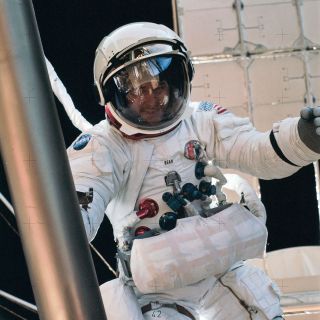
Alan LaVern Bean was born on March 15, 1932 in Wheeler, Texas. Bean received his Bachelor of Science degree in aeronautical engineering from the University of Texas in 1955. A Navy ROTC (Reserve Officer Training Corps) student, Bean was commissioned as an ensign upon graduation.
Following flight training, he was assigned to a jet attack squadron in Jacksonville, Florida, where he served for four years before reporting to the U.S. Navy Test Pilot School at Patuxent River, Maryland. As a test pilot, he logged 5,500 hours of flying time in 27 different types of aircraft.
"When I was doing that, the space program was born — Al Shepard, John Glenn and others — and when I saw them doing that, I thought, 'Wow! I never thought of this, but this is just an extension of what I'm doing. It looks like it'd be more fun,'" Bean told a NASA interviewer in 1998.
After his astronaut selection, but before his assignment to Apollo 12, Bean served alongside Clifton "CC" Williams on the backup crew for the Gemini 10 mission in 1966 and the support crew for Conrad's and Gordon's Gemini 11 mission later that year. Bean was then relegated to the Apollo Applications Program, a development effort that would eventually produce the Skylab space station.
"I wanted to go to Apollo. Everybody did, but I wasn't fitting in," Bean admitted. "So I got shuffled over there, and I then didn't learn that much either, other than I was out in left field and I just had to accept it and had to make the best of it."
Then tragedy struck. Williams, who was assigned to fly with Conrad and Gordon to the moon, was killed in a jet crash on Oct. 5, 1967.
In the wake of the accident, Conrad personally requested that Bean fly with him as the Apollo 12 lunar module pilot.
After flying to the moon and living on board Skylab, Bean served as the backup to the commander of the U.S. side of the 1975 Apollo-Soyuz Test Project jointly flown with the Soviet Union.
That's how it felt to walk on the moon
In October 1975, Bean retired from the Navy with the rank of Captain but stayed at NASA through June 1981, leading the astronaut candidate operations and training group as the first of the space shuttle astronauts were recruited in 1978 and 1980. Bean also served as acting chief of the Astronaut Office while John Young was off training for STS-1, the first launch of the shuttle program.
Around that time, Bean began considering what he would do next.
"Was I going to fly the shuttle?" he asked himself. "I was doing all the things you do to be a shuttle commander. I was getting as much simulator time as anybody, flying the Shuttle Training Aircraft, flying T-38 [jets] and everything like that."
"I was thinking, 'I don't know what to do.' But finally I decided that they had enough good young men and women that could fly the space shuttle as good as I could or better," he told a NASA interviewer in 1998.
An aspiring artist since he took a fine art class as a student at the Navy Test Pilot School, Bean followed the advice of a friend and decided to leave NASA and try his hand at becoming a professional painter focusing on the things he saw and felt while exploring the moon.
"I had a skill, and an experience, and I said, 'in my opinion someone needs to do this job, to record this great human adventure in fine art so that it will remain,'" he recalled. "It doesn't replace the movies, it doesn't replace the books other people write. But it was a great enough event in human history that recording it this way is something that only I am interested in doing, but it's worth doing."
Bean's approach to his paintings was to blend an eye for technical accuracy with an impressionistic use of color. His subjects included landscapes that he first-hand witnessed, the activities of his fellow Apollo astronauts and fantasy scenes based on what he thought could have or should have been possible.
Bean further set his creations apart by embedding small pieces of his moon-dust-stained mission patches in his acrylic paint and texturing his canvas using the sole of a replica lunar boot and the head of a geology hammer he used on the moon.
"Every painting that I do, I put that texture, get those moon boots and all that other texture. Then I sprinkle a little bit of the patch in there so that symbolically there's dust from the Ocean of Storms," he described.
Remembrance of a moonwalk
At the time of his death, his online collection index listed more than 160 paintings. More than 40 of those works were exhibited by the Smithsonian's National Air and Space Museum in Washington, DC in 2009 in celebration of the 40th anniversary of the Apollo 11 and 12 moon landings.
A mural of one his paintings, "Reaching for the Stars," adorned the entrance wall to the U.S. Astronaut Hall of Fame in Florida from 1990 through 2015.
Bean's art was also published in two collections: "Apollo: An Eyewitness Account By Astronaut/Explorer Artist/Moonwalker" (Greenwich Workshop Press, 1998) and "Painting Apollo: First Artist on Another World" (Smithsonian Books, 2009), both of which were written with Andrew Chaikin.
For his service to his country, Bean was awarded distinguished service medals by the Navy and NASA. He shared in the Robert J. Collier Trophy in 1973 and Robert H. Goddard Memorial Trophy in 1975 as part of the Skylab team.
Bean was inducted into the U.S. Astronaut Hall of Fame in 1997 and the National Aviation Hall of Fame in 2010.
Bean was the last living member of the Apollo 12 crew. He was preceded in death by Conrad in 1999 and Gordon in 2017. With Bean's death, only four of the twelve Apollo moonwalkers are still alive: Buzz Aldrin (Apollo 11), David Scott (Apollo 15), Charles Duke (Apollo 16) and Harrison Schmitt (Apollo 17).
He is survived by his wife Leslie, a sister Paula Stott, and two children from a prior marriage, a daughter Amy Sue and son Clay.
See more photographs of Alan Bean, Apollo 12 and Skylab II astronaut, at collectSPACE.
Follow collectSPACE.com on Facebook and on Twitter at @collectSPACE. Copyright 2018 collectSPACE.com. All rights reserved.
Join our Space Forums to keep talking space on the latest missions, night sky and more! And if you have a news tip, correction or comment, let us know at: community@space.com.

Robert Pearlman is a space historian, journalist and the founder and editor of collectSPACE.com, a daily news publication and community devoted to space history with a particular focus on how and where space exploration intersects with pop culture. Pearlman is also a contributing writer for Space.com and co-author of "Space Stations: The Art, Science, and Reality of Working in Space” published by Smithsonian Books in 2018.In 2009, he was inducted into the U.S. Space Camp Hall of Fame in Huntsville, Alabama. In 2021, he was honored by the American Astronautical Society with the Ordway Award for Sustained Excellence in Spaceflight History. In 2023, the National Space Club Florida Committee recognized Pearlman with the Kolcum News and Communications Award for excellence in telling the space story along the Space Coast and throughout the world.


